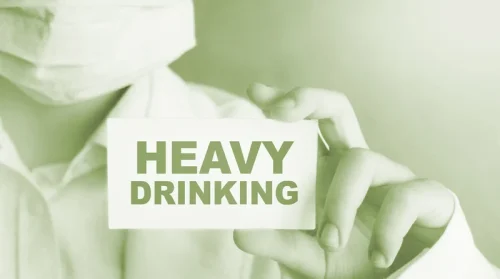
Researchers found that 21.1 percent of alcoholics fall into this category. Their alcoholism usually manifests by the time they are 18 or 19, and more than half come from families with alcoholism. Almost 66% of chronic severe alcoholics have sought help for their alcoholism.
What Factors Contribute to Alcoholism?

Addiction Resource does not favor or support any specific recovery center, nor do we claim to ensure the quality, validity, or effectiveness of any particular treatment center. No one should assume the information provided on Addiction Resource as authoritative and should always defer to the advice and 5 types of alcoholics care provided by a medical doctor. The next largest group of alcoholics is called the functional subtype, accounting for 19.5% of alcoholics. They typically develop their alcohol dependency in their late 30s, they might smoke or suffer from depression and they are slightly more likely to be male.
The Intermediate Familial Alcoholic
One such issue is that of a perceived need for professional help and recognition that a problem with alcohol exists. In 2013, the National Survey on Drug Use and Health (NSDUH) reported that of those who needed treatment https://ecosoberhouse.com/ and didn’t receive it, approximately 95.5 percent didn’t feel they needed it. One of the most challenging aspects of chronic severe alcoholism is its frequent co-occurrence with other mental health disorders.
The NIAAA Study and Their Definition of the 5 Types of Alcoholics
- About two-thirds of chronic severe alcoholics get help for their drinking.
- Around one-quarter of the functional alcoholic demographic have had at least one major depressive episode in their lives as well.
- Alcoholism and its adverse impact on individuals, families, and society is fueling a need for health educators who can create effective national and global health education programs.
- Several factors contribute to the development and maintenance of functional alcoholism.
- It is essential to have a clear understanding of alcoholism to address its impact on individuals, families, and society as a whole.
- About one-third of AUD patients in the US started off as a part of the young adult subtype.
By shedding light on these subtypes, we can better address the complexities of alcoholism and provide the necessary resources for recovery. This group has the lowest levels of education, employment, and income of any group. This group also drinks more at once and more overall than other groups, although they drink slightly less frequently.

Of this type, about 76% are male and only 7.6% have received a college degree, although another 13.4% are still in school. Family incomes average around $32,000, the lowest among the subtypes alongside the chronic severe subtype. Not all alcoholics know they suffer from a substance abuse problem because denial is a regular and expected aspect of alcoholism.
While these facts may paint a less than hopeful portrait of this group, the NIAAA researchers also found that they are the most likely of any of their five subtypes to seek treatment. When they do, they prefer specialty rehab, detox programs, self-help groups, and inpatient treatment for recovery from chronic alcoholism. The NIAAA study was based on the National Epidemiologic Survey on Alcohol and Related Conditions (NESARC), a nationally representative study of alcohol, drug, and mental disorders in the United States. It focused on 1,484 NESARC respondents who met all diagnostic criteria for alcohol dependence and included people who were in treatment for their AUD as well as people who were not.
In 1876 the association established the Quarterly Journal of Inebriety, which, over a period of 38 years, published numerous articles by leading physicians from the United States and abroad about the different forms of alcoholism. Similar societies formed in England, under Norman Kerr’s leadership, and in France, under Valentin-Jacques Magnan’s direction. The best type of treatment will depend on your treatment needs and individual circumstances. There’s no single solution for alcohol addiction, and treatment is highly individualized. In that case, it’s best to speak with your doctor or an addiction treatment professional at a reputable detox or rehab center like Nova Recovery Center.
- Likely to be in college, this subtype drinks less frequently than other groups, but they are more prone to binge drink when they do.
- ”This article provides some of the historical attempts about the classification of alcoholics and explains the five different types of alcoholics as they are currently understood.
- Addiction Resource does not favor or support any specific recovery center, nor do we claim to ensure the quality, validity, or effectiveness of any particular treatment center.
- While understanding the different types of alcoholism is crucial, effective treatment is equally important for navigating this substance use disorder.
Is there a cure for alcoholism?
This type of treatment allows you to receive help in an outpatient setting while still attending to your everyday responsibilities. This is a great option for people with mild to moderate addiction and those who have already gone through inpatient treatment. It typically includes medically monitored withdrawal, which helps reduce symptoms of withdrawal. It can also help prevent seizures or other complications that may arise. According to the NIAAA, to determine the level of severity, individuals are asked questions similar to what’s listed below.
- In 1893 Kerr, who also was an honorary member of the American association, published the influential textbook Inebriety and Narcomania, which divided inebriates into two groups, periodic and habitual (Kerr 1893).
- Treatment for alcohol use disorder varies depending on the severity of your symptoms and how long the condition has persisted.
- This group has one of the lowest education levels of any subtype and also has the lowest employment rate.
